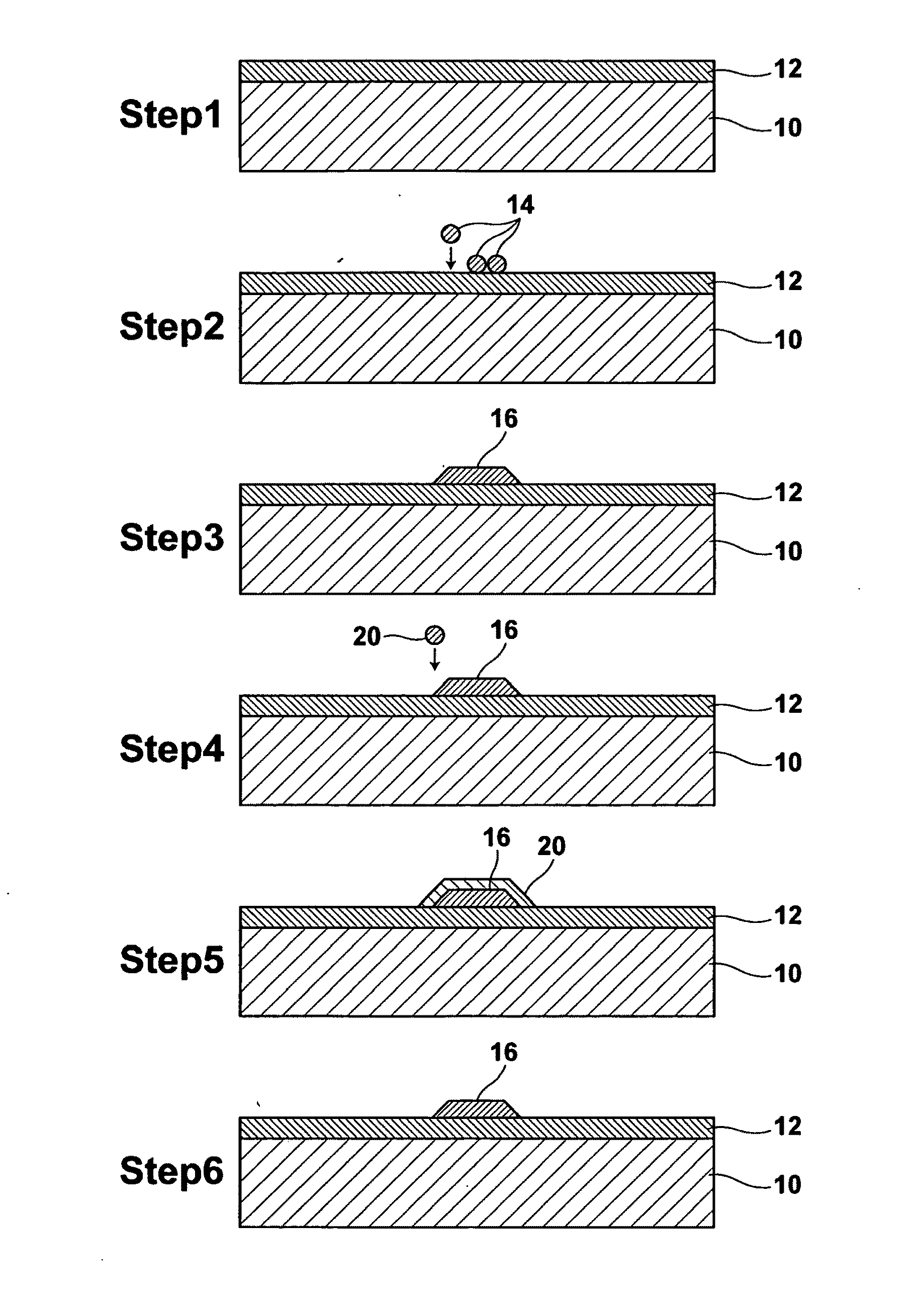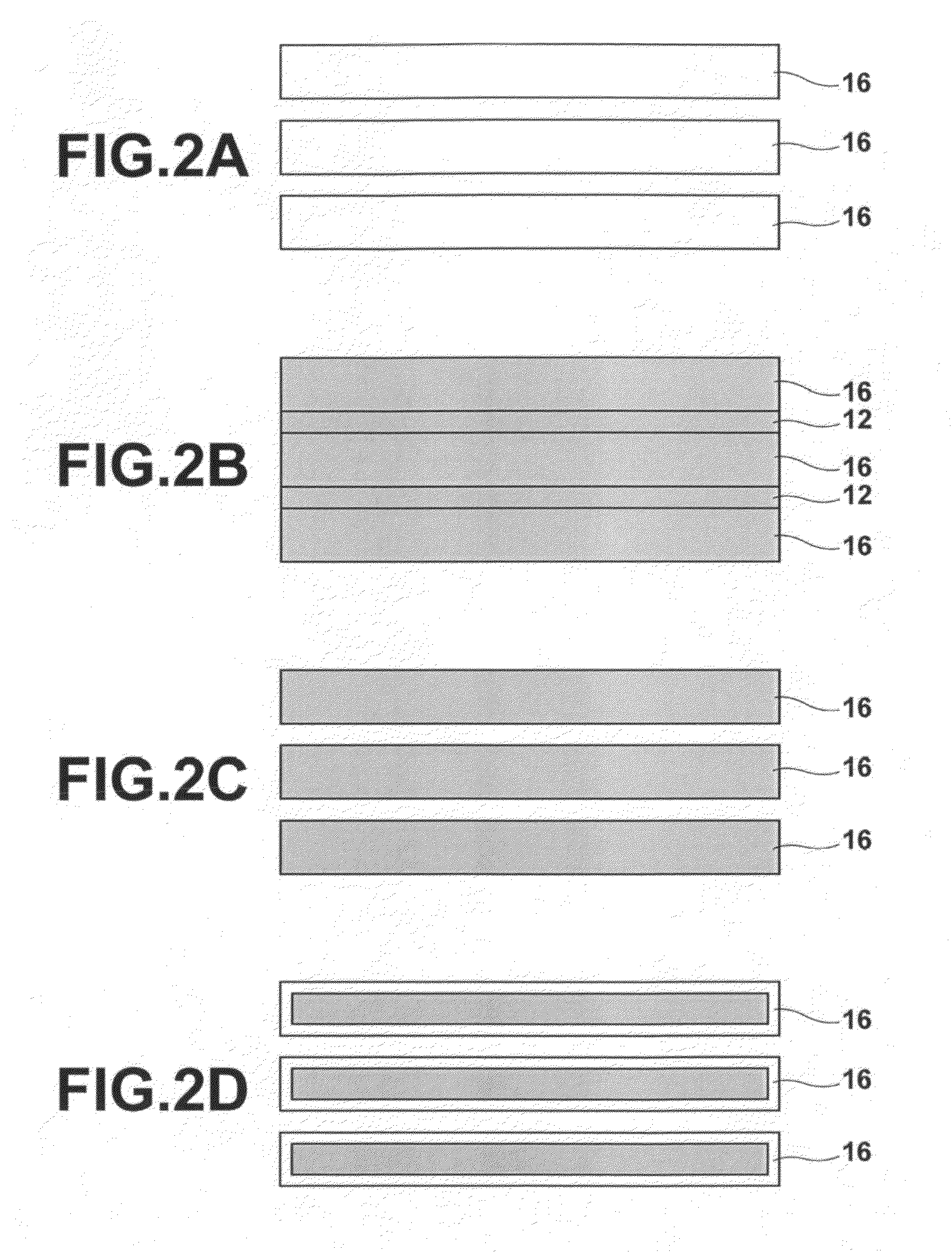Electronic circuit board manufacturing method
a manufacturing method and electronic circuit board technology, applied in the direction of superimposed coating process, liquid/solution decomposition chemical coating, resistive material coating, etc., can solve the problems of large amount of waste liquid, cracking or detachment, and time-consuming wiring pattern formation, so as to reduce standing time at room temperature, enhance the cohesiveness and enhance the cohesion of metal colloidal particles
- Summary
- Abstract
- Description
- Claims
- Application Information
AI Technical Summary
Benefits of technology
Problems solved by technology
Method used
Image
Examples
examples
[0244]Electronic circuit boards were produced as Examples of the present invention and Examples were evaluated, the results of which will now be described.
examples 1 , 2
Examples 1, 2
[0245]For examples 1, 2, glass was used as base material 10. As coagulant solution 20, an aqueous solution of Alphaine 83 (aluminum chloride), manufactured by Taimei Chemicals Co., Ltd., diluted to a concentration of 2% with ion-exchange water was used. As the solvent of metal colloid solution 14, NPS-J, manufactured by Harima Chemicals, Inc., was used (for Example 1, the solvent used is tetradecane) and AGIN-W4A, manufactured by Sumitomo Electric Industries Ltd., was used (for Example 2).
[0246]Coagulant solution 20 was applied over a surface of base material 10 by a bar coating method, then the applied solution was dried at 70° C. for 5 minutes, and a conductive pattern was formed with metal colloid solution 14. Then, 6 days after the formation of the conductive pattern, the volume resistivity of the conductive pattern was measured using Loresta-GP manufactured by Mitsubishi Chemical Corporation. For each of Examples 3 to 6 to be described hereinafter, the volume resis...
example 3
[0247]As base material 10 having reception layer 12 formed thereon, an inkjet receiver paper (Kassai, “Photofinishing” Value) manufactured by FUJIFILM Corporation was used. As coagulant solution 20, an aqueous solution of Alphaine 83 (aluminum chloride), manufactured by Taimei Chemicals Co., Ltd., diluted to a concentration of 2% with ion-exchange water was used. As the solvent of metal colloid solution 14, AGIN-W4A, manufactured by Sumitomo Electric Industries Ltd., was used.
PUM
| Property | Measurement | Unit |
|---|---|---|
| width | aaaaa | aaaaa |
| width | aaaaa | aaaaa |
| width | aaaaa | aaaaa |
Abstract
Description
Claims
Application Information
 Login to View More
Login to View More - R&D
- Intellectual Property
- Life Sciences
- Materials
- Tech Scout
- Unparalleled Data Quality
- Higher Quality Content
- 60% Fewer Hallucinations
Browse by: Latest US Patents, China's latest patents, Technical Efficacy Thesaurus, Application Domain, Technology Topic, Popular Technical Reports.
© 2025 PatSnap. All rights reserved.Legal|Privacy policy|Modern Slavery Act Transparency Statement|Sitemap|About US| Contact US: help@patsnap.com



